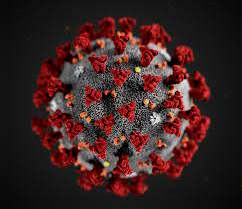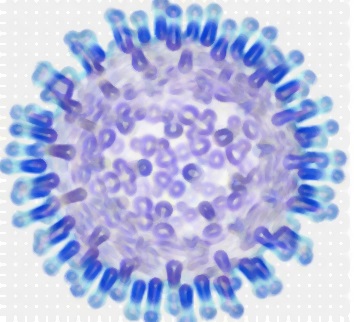
There has been a lot of concern about Covid-19, the novel coronavirus from Wuhan, China, that has sent the public scrambling for measures to prevent themselves from falling victim to this new strain of flu.
Although the novel coronavirus is causing a worldwide stir right now, we should not forget about the common viral strains that cause the public to fall sick more regularly.
There are many viruses that cause respiratory infections commonly called the cold or flu.
Many viruses, including common strains of coronaviruses, are prevalent enough that the science community is able to develop vaccines that prevent many people from falling sick.
Let’s take H1N1, a type A influenza virus as an example: In 2009, a global pandemic was brought on by this then-new virus.
It infected millions, with an estimated 575,400 deaths reported worldwide.
H1N1, also known as swine flu, is now considered a common strain and no longer causes the kind of harm that it did in 2009.
In the long run, it’s better for us to understand how the common cold and flu affect us, the differences between them, and how to prevent and treat them.
To start, observing your symptoms is the easiest way to tell the two respiratory infections apart.
A cold comes with the following symptoms:
– Sneezes
– Cough
– Headaches
– Sore throat
– Runny nose
– Body aches
– Mild fatigue
Meanwhile, the flu can include the following symptoms:
– Headaches
– Sore throat
– Dry cough
– Fever
– Chills and shakes
– Body aches
– Headaches
– Runny nose
– Nausea
– Diarrhoea
– Severe fatigue
More about viruses
When an infected person coughs or sneezes without covering their mouths, you can catch a cold or the flu.
When you touch a surface that has been previously handled by an infected person, you can also catch a cold or the flu.
This is why masks and regular hand washing is highly recommended at all times, more so when it is cold/flu season.
While both are caused by viruses, cold symptoms are usually less severe than the flu.
There are approximately 200 strains of viruses that can cause a cold.
Humans are most susceptible to rhinoviruses A, B and C, but overall, there are 150 types of rhinoviruses that account for nearly half of cold cases every year.
Coronaviruses are the second most common group of viruses that make humans fall sick.
The symptoms of a coronavirus infection are more aggressive than those of a rhinovirus infection, and they are known to cause pneumonia – inflammation of the lungs caused by infection.
Coronaviruses are responsible for outbreaks such as SARS (severe acute respiratory syndrome), as well as the most recent Covid-19 epidemic, which is suspected to have been transmitted from exotic animals like pangolins or bats, to humans.
Corona, which means crown in Latin, is a reference to the crown-shaped projections observed on the virus.
It is not related to the beer with the same brand, as so many on social media seem to think.
It is commonly found in animals like bats, cattle, camels, and even cats, but in unusual instances, it can spread to humans.
Currently, there are seven known strains of coronaviruses that affect humans, including Covid-19, SARS and MERS (Middle Eastern respiratory syndrome).
More about colds
If you’ve had a cold before, you’ll know that antibiotics are unable to treat viral infections.
Instead, we use over-the-counter (OTC) medications, such as nasal decongestants, acetaminophen, antihistamines and NSAIDs (non-steroidal anti-inflammatory drugs).
These are combined with drinking plenty of fluids and getting lots of rest.
For some, adding supplements like vitamin C, echinacea or zinc may provide added relief and lessen cold symptoms.
The effectiveness of these supplements may be an indirect effect of strengthening the immune symptoms to combat viruses.
Many people recover from colds without seeing the doctor, but if it lasts more than a week or you experience a high fever that doesn’t subside, do get your symptoms checked by the doctor.
There are two fairly easy ways to prevent a cold:
Avoidance
The best way to prevent colds is to avoid coming into contact or sharing utensils with those who might be sick.
If you are down with a cold yourself, it’s best to stay home.
Good hygiene
As it isn’t always possible to avoid being around other people when you are sick, the best other option is to be as hygienic as possible when going out in public.
Wash your hands with soap and water after using the bathroom or handling items in places like the supermarket or shopping malls.
Carry alcohol-based hand sanitiser to cleanse your hands in case of situations where sinks are unavailable.

Washing your hands frequently with soap is a good way to prevent getting infected with disease-causing germs.
More about the flu
In countries that have four seasons, the flu is generally seasonal, occurring during winter months.
In Malaysia, flu viruses can afflict us all year round.
You can develop the flu if you come into contact with droplets from people who are infected.
You’re contagious from the day before you actually fall sick, and up to five to seven days after showing symptoms.
Influenza A, B and C are the viruses that cause outbreaks of flu “seasons”. The most common are A and B.
Getting vaccinated for the flu is known to be effective about 40%-60% of the time.
We should update our flu vaccination every year, as viruses mutate quickly, causing the types of common viruses that circulate every year to change.
This is why the World Health Organization (WHO) leads the creation of a flu vaccine biannually, based on assessments of the virus strains most likely to be circulate that year.
Of course, the vaccination can only be as effective as the predictions, which is why protection from the flu tends to vary within the range of 40% to 60%.
A more serious form of the flu is pneumonia, which affects these groups the most:
-Young children
-Older adults
-Pregnant women
-People with health conditions that weaken their immune system, such as asthma, heart disease or diabetes
Getting lots of rest and drinking plenty of water to prevent dehydration are the best methods of treating the flu.
Pain relievers like ibuprofen and acetaminophen, and OTC decongestants can help with alleviating symptoms.
Note that for children, aspirin is not recommended.
At the doctor’s, you may be prescribed antiviral medications like oseltamivir, zanamivir or peramivir for flu treatment.
They are known to shorten the duration of a flu and stop it from becoming pneumonia if you start the course of drugs within 48 hours of the onset of flu symptoms.
Patients at risk of serious complications should seek a doctor for antiviral drugs. They include:
-People over the age of 65
-Pregnant women
-Women who delivered babies in the last two weeks
-Children under age of two
-Children taking aspirin under the age of 18
-Those with weakened immune systems due to HIV (human immunodeficiency virus), steroid treatment or chemotherapy
-People who are extremely obese
-People with chronic lung or heart conditions
-People with metabolic disorders, such as diabetes, anaemia or kidney disease
-People living in long-term care facilities, such as nursing homes
Stay healthy
When people are infected by common airborne cold and flu viruses, the symptoms that follow are often troublesome and last for up to two weeks.
If not properly managed and treated, symptoms become worse and could lead to death.
Many people choose to get vaccinated for the flu, but because the flu strains that circulate change every year, getting a flu shot doesn’t guarantee that you won’t fall sick.
At-risk groups like children, pregnant women, the elderly and those with chronic conditions or impaired immune systems, should update their flu shots every year.
On a daily basis, maintain a good diet that is rich in nutrients: eat plenty of vegetables, low sugar fruit and lean proteins that will give you much of the nutrients needed to keep your body strong and fight off common viruses on its own.
Taking the ideal dose of vitamins and nutritional supplements will be helpful in improving the immune system.
Your physical health can also be affected by mental well-being, so to get your mind off daily stress, take up an active hobby like yoga, walking, hiking or tai chi.
The responsibility to stop a mass outbreak of flu falls on everyone.
Whether you are currently sick or healthy, practise good hygiene and preventive measures.
When you are sick, cover your mouth and nose in public, and go to the clinic before your symptoms grow worse.
When you are healthy, avoid those who exhibit symptoms of cold or flu for awhile, and continue to practice good hygiene.
Datuk Dr Nor Ashikin Mokhtar is a consultant obstetrician and gynaecologist, and a functional medicine practitioner. For further information, email starhealth@thestar.com.my. The information provided is for educational and communication purposes only and it should not be construed as personal medical advice. Information published in this article is not intended to replace, supplant or augment a consultation with a health professional regarding the reader’s own medical care. The Star does not give any warranty on accuracy, completeness, functionality, usefulness or other assurances as to the content appearing in this column. The Star disclaims all responsibility for any losses, damage to property or personal injury suffered directly or indirectly from reliance on such information.

About Coronavirus
A coronavirus is one of many viruses that cause diseases in mammals and birds. In humans, coronaviruses cause respiratory tract infections that are typically mild, such as the common cold, though rarer forms such as SARS, MERS and COVID-19 can be lethal. Symptoms vary in other species: in chickens, they cause an upper respiratory tract disease, while in cows and pigs they cause diarrhea. There are no vaccines or antiviral drugs to prevent or treat human coronavirus infections.
Coronaviruses comprise the subfamily Orthocoronavirinae in the family Coronaviridae, in the order Nidovirales. They are enveloped viruses with a positive-sense single-stranded RNA genome and a nucleocapsid of helical symmetry. The genome size of coronaviruses ranges from approximately 27 to 34 kilobases, the largest among known RNA viruses. The name coronavirus is derived from the Latin corona, meaning “crown” or “halo”, which refers to the characteristic appearance of the virus particles (virions): they have a fringe reminiscent of a crown or of a solar corona.
Discovery
Coronaviruses were discovered in the 1960s. The earliest ones discovered were infectious bronchitis virus in chickens and two viruses from the nasal cavities of human patients with the common cold that were subsequently named human coronavirus 229E and human coronavirus OC43. Other members of this family have since been identified, including SARS-CoV in 2003, HCoV NL63 in 2004, HKU1 in 2005, MERS-CoV in 2012, and SARS-CoV-2 (formerly known as 2019-nCoV) in 2019; most of these have been involved in serious respiratory tract infections.
Name and morphology
The name “coronavirus” is derived from the Latin corona and the Greek κορώνη (korṓnē, “garland, wreath”), meaning crown or halo. The name refers to the characteristic appearance of virions (the infective form of the virus) by electron microscopy, which have a fringe of large, bulbous surface projections creating an image reminiscent of a crown or of a solar corona. This morphology is created by the viral spike (S) peplomers, which are proteins on the surface of the virus that determine host tropism.
Proteins that contribute to the overall structure of all coronaviruses are the spike (S), envelope (E), membrane (M), and nucleocapsid (N). In the specific case of the SARS coronavirus (see below), a defined receptor-binding domain on S mediates the attachment of the virus to its cellular receptor, angiotensin-converting enzyme 2 (ACE2). Some coronaviruses (specifically the members of Betacoronavirus subgroup A) also have a shorter spike-like protein called hemagglutinin esterase (HE).
Replication

The infection cycle of a coronavirus
After entry into the host cell, the virus particle is uncoated, and its genome enters the cell cytoplasm.
The coronavirus RNA genome has a 5′ methylated cap and a 3′ polyadenylated tail, which allows the RNA to attach to the host cell’s ribosome for translation.
Coronavirus genomes also encode a protein called RNA-dependent RNA polymerase (RdRp), which allows the viral genome to be transcribed into new RNA copies using the host cell’s machinery. The RdRp is the first protein to be made; once the gene encoding the RdRp is translated, translation is stopped by a stop codon. This is known as a nested transcript. When the mRNA transcript only encodes one gene, it is monocistronic.[citation needed] Coronavirus non-structural proteins provide extra fidelity to replication, because they confer a proofreading function, which is lacking in RNA-dependent RNA polymerase enzymes alone.
The genome is replicated and a long polyprotein is formed, where all of the proteins are attached. Coronaviruses have a non-structural protein – a protease – which is able to cleave the polyprotein. This process is a form of genetic economy, allowing the virus to encode the greatest number of genes in a small number of nucleotides
Transmission
Human to human transmission of coronaviruses is primarily thought to occur among close contacts via respiratory droplets generated by sneezing and coughing
Human coronaviruses
Coronaviruses are believed to cause a significant proportion of all common colds in adults and children. Coronaviruses cause colds with major symptoms, such as fever and sore throat from swollen adenoids, primarily in the winter and early spring seasons. Coronaviruses can cause pneumonia – either direct viral pneumonia or a secondary bacterial pneumonia – and may cause bronchitis – either direct viral bronchitis or a secondary bacterial bronchitis. The much publicized human coronavirus discovered in 2003, SARS-CoV, which causes severe acute respiratory syndrome (SARS), has a unique pathogenesis because it causes both upper and lower respiratory tract infections. There are no vaccines or antiviral drugs to prevent or treat human coronavirus infections.
Seven strains of human coronaviruses are known:
-Human coronavirus 229E (HCoV-229E)
-Human coronavirus OC43 (HCoV-OC43)
-Severe acute respiratory syndrome coronavirus (SARS-CoV)
-Human coronavirus NL63 (HCoV-NL63, New Haven coronavirus)
-Human coronavirus HKU1
-Middle East respiratory syndrome-related coronavirus (MERS-CoV), previously known as novel coronavirus 2012 and HCoV-EMC
-Severe acute respiratory syndrome coronavirus 2 (SARS-CoV-2), previously known as 2019-nCoV or “novel coronavirus 2019”
-The coronaviruses HCoV-229E, -NL63, -OC43, and -HKU1 continually circulate in the human population and cause respiratory infections in adults and children world-wide
Coronavirus disease 2019 (COVID-19)
 Cross-sectional model of a coronavirus
Cross-sectional model of a coronavirus
In December 2019, a pneumonia outbreak was reported in Wuhan, China. On 31 December 2019, the outbreak was traced to a novel strain of coronavirus, which was given the interim name 2019-nCoV by the World Health Organization (WHO), later renamed SARS-CoV-2 by the International Committee on Taxonomy of Viruses. Some researchers have suggested that the Huanan Seafood Market may not be the original source of viral transmission to humans.
As of 18 February 2020, there have been 2,009 confirmed deaths and more than 75,200 confirmed cases in the coronavirus pneumonia outbreak. The Wuhan strain has been identified as a new strain of Betacoronavirus from group 2B with an ~70% genetic similarity to the SARS-CoV. The virus has a 96% similarity to a bat coronavirus, so an origin in bats is widely suspected.
Other animals
Coronaviruses have been recognized as causing pathological conditions in veterinary medicine since the early 1970s. Except for avian infectious bronchitis, the major related diseases have mainly an intestinal location.
Diseases caused
Coronaviruses primarily infect the upper respiratory and gastrointestinal tract of mammals and birds. They also cause a range of diseases in farm animals and domesticated pets, some of which can be serious and are a threat to the farming industry. In chickens, the infectious bronchitis virus (IBV), a coronavirus, targets not only the respiratory tract but also the urogenital tract. The virus can spread to different organs throughout the chicken.v Economically significant coronaviruses of farm animals include porcine coronavirus (transmissible gastroenteritis coronavirus, TGE) and bovine coronavirus, which both result in diarrhea in young animals. Feline coronavirus: two forms, feline enteric coronavirus is a pathogen of minor clinical significance, but spontaneous mutation of this virus can result in feline infectious peritonitis (FIP), a disease associated with high mortality. Similarly, there are two types of coronavirus that infect ferrets: ferret enteric coronavirus causes a gastrointestinal syndrome known as epizootic catarrhal enteritis (ECE), and a more lethal systemic version of the virus (like FIP in cats) known as ferret systemic coronavirus (FSC).v There are two types of canine coronavirus (CCoV), one that causes mild gastrointestinal disease and one that has been found to cause respiratory disease. Mouse hepatitis virus (MHV) is a coronavirus that causes an epidemic murine illness with high mortality, especially among colonies of laboratory mice. Sialodacryoadenitis virus (SDAV) is highly infectious coronavirus of laboratory rats, which can be transmitted between individuals by direct contact and indirectly by aerosol. Acute infections have high morbidity and tropism for the salivary, lachrymal and harderian glands.
A HKU2-related bat coronavirus called swine acute diarrhea syndrome coronavirus (SADS-CoV) causes diarrhea in pigs.
Prior to the discovery of SARS-CoV, MHV had been the best-studied coronavirus both in vivo and in vitro as well as at the molecular level. Some strains of MHV cause a progressive demyelinating encephalitis in mice which has been used as a murine model for multiple sclerosis. Significant research efforts have been focused on elucidating the viral pathogenesis of these animal coronaviruses, especially by virologists interested in veterinary and zoonotic diseases.
In domestic animals
-Infectious bronchitis virus (IBV) causes avian infectious bronchitis.
-Porcine coronavirus (transmissible gastroenteritis coronavirus of pigs, TGEV).
-Bovine coronavirus (BCV), responsible for severe profuse enteritis in of young calves.
-Feline coronavirus (FCoV) causes mild enteritis in cats as well as severe Feline infectious peritonitis (other variants of the same virus).
-the two types of canine coronavirus (CCoV) (one causing enteritis, the other found in respiratory diseases).
-Turkey coronavirus (TCV) causes enteritis in turkeys.
-Ferret enteric coronavirus causes epizootic catarrhal enteritis in ferrets.
-Ferret systemic coronavirus causes FIP-like systemic syndrome in ferrets.[67]
-Pantropic canine coronavirus.
-Rabbit enteric coronavirus causes acute gastrointestinal disease and diarrhea in young European rabbits. Mortality rates are high.
A new veterinary disease, porcine epidemic diarrhea virus (PED or PEDV), has emerged around the world. Its economic importance is unclear but shows high mortality in piglets
Source : thestar.com.my wikipedia.org
#Health #Cold #Flu #WuhanCoronavirus #Coronavirus #safetyhealthtips #tipstricks #onlyinmalaysia #stayhealthy #fluvirus #InfectiousDiseases #ColdRemedy #FluVaccine #COVID-19




